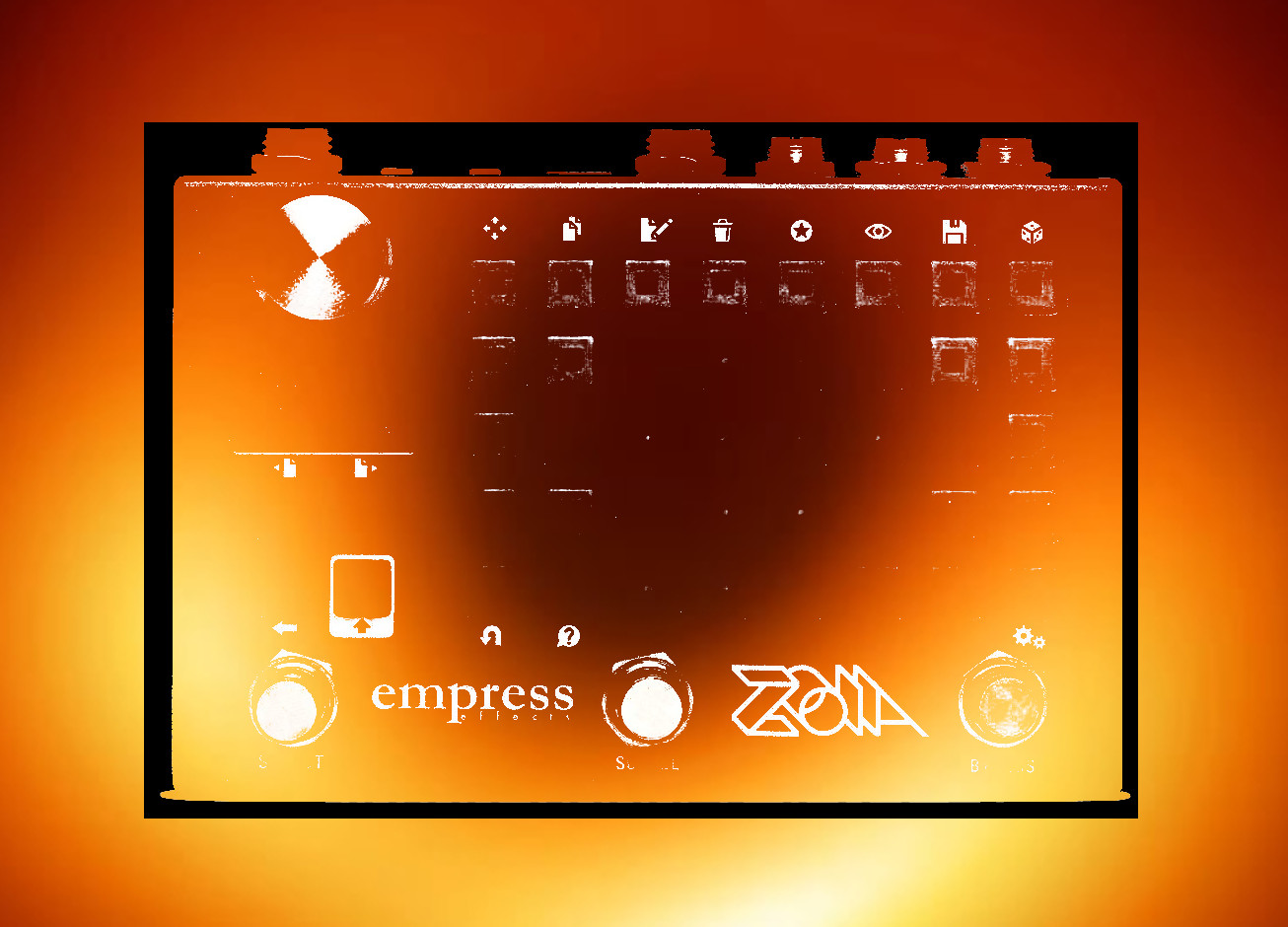This patch combines a burst generator and arpeggiator, producing bursts of gates and quantized pitches to accompany those gates. It’s a fun way to add both rhythmic variety and a melodic element into a patch, with some probability functions to make it useful for generative purposes.
The method behind producing the bursts involves using a ratcheting sequencer, with the output controlled by a clocked probability gate. When the probability gate is high, the ratcheted output is passed; when it is low, the ratchets are cut off. From there, another probability gate determines whether the individual ratchets are passed, allowing breaks between different bursts, depending on the density setting.
The output of the burst generator is used to trigger a sample and hold. The input of the sample and hold is different LFO shapes, which produce the different shapes of the arpeggios. There is also a sequencer option. Between the two, you can get a lot of different melodic elements at play.
I added a very basic synth voice for demonstration purposes (although I think it sounds pretty nice). It’s just a sine wave FMing itself, with the output send through a tape delay (the tempo of the delay is based on the speed of the ratchets).
User buttons:
Manual trigger — this will trigger the burst generator on the next clock cycle
Manual gate — this will pass the output of the burst generator regardless of clock position (immediate on/off)
CV inputs:
CV 1: Clock (0-10V) — accepts a clock signal (tap tempo also available); you may need to adjust the clock filter, depending on your clock source
CV 2: Burst chance (-5V-+5V)– w/ attenuverter located directly above input, this can be used to modulate the likelihood of the patch producing a burst
CV 3: Density (-5V-+5V) — /attenuverter located directly above input, this can be used to modulate the likelihood of a given gate within a burst being passed through
CV 4: Pitch (0-10V) — when no CV is present, the pitch control can be used to set the pitch; when CV is present, this can be used to offset incoming pitch CV
CV outputs:
CV 1: Bursts (0-10V) — gates produced by the generator
CV 2: Pitch (0-10V) — pitch CV produced by the arppegiator
CV 3: Burst gate (0-10V) — a gate held high for the duration of a clock cycle that produces a burst
CV 4: Envelopes (0-5V) — the envelopes produced by the synth voice’s envelope controls
Controls:
In the top left corner are controls for the burst generator:
Burst chance sets the likelihood of a burst being generated in a given clock cycle.
Burst number sets the number of gates produced in a burst (from 1 to 50).
Density sets the likelihood individual gates in the burst will be passed to the output (0 = no gates passed; 1 = all gates passed).
There is also a UI button that displays the tempo of incoming clock, if present; if no clock is present, it can be used to set a tap tempo.
Below the burst controls are controls for the arpeggiator:
There is a six button configuration to choose between the different arpeggio options. Up, down, up-down, and random. The fifth button “Random shape,” will select between one of the previous four options randomly on each clock cycle (this is a good way to balance order and randomness, in my experience). The sixth button selects the 16-step sequencer.
Beside these buttons are the pitch control. This sets the pitch if no CV or MIDI is present. If either are, it can be used to transpose/offset the incoming CV or MIDI.
Below the pitch control is a range control. This is bipolar and allows for positive and negative ranges (negative ranges will invert the shape of arpeggios). It has no effect on the sequencer.
Below the arpeggiator controls are the controls for the basic synth voice:
Attack and decay control its envelope (and also the envelopes produced by the envelopes CV output). Delay mix and feedback control the tape delay the synth voice uses.
In the top right corner is the quantizer used by the patch. Quantizes incoming CV, as well as the outputs of the various arpeggios and the sequencer.
Below the quantizer are the inputs for the 16 step sequencer. The notes are relative to the incoming pitch (or the pitch set by the pitch control), not absolute, so A1 is an octave above the incoming pitch, etc. To determine the number of steps used, turn any step below -A5. This will cause the sequencer to reset at that step.


